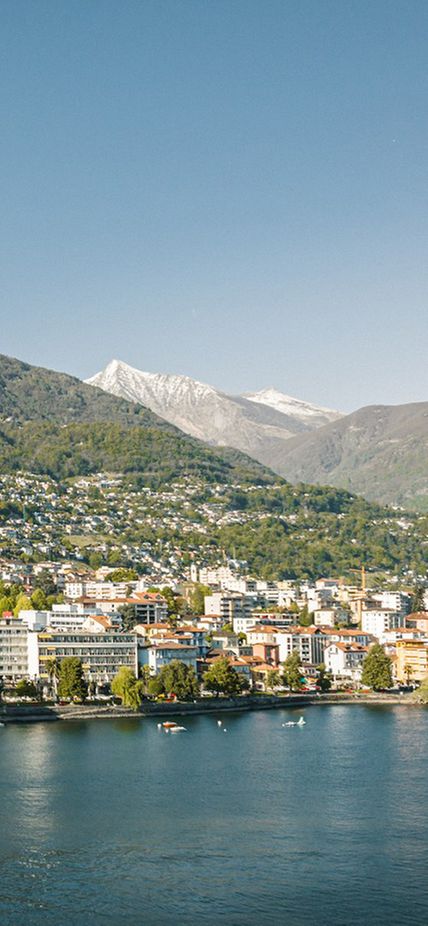Muralto is a major tourist resort on Lake Maggiore. The merging of Muralto and the city of Locarno makes the municipality one of the most popular destinations in Ticino. Muralto is located between Locarno and Minusio and is often perceived as a district of Locarno and not as an independent municipality. And yet Muralto is an important place for the Ascona-Locarno region and Ticino, especially from a touristic point of view. Not least because the Locarno railway station is in Muralto, making it a strategically important point. So, if you travel to Lake Maggiore by train, you arrive in Muralto.
The name Muralto comes from the Latin murus altus meaning "high wall" and dates back to the 12th century. This name may have come from an ancient Lombard fortress that was given to a patrician family by the Bishop of Como. Even today, a few remains of the castle can still be seen, former ancestral seat of the noble family of Muralt. It is assumed that the area was already inhabited in early Roman times and was considered an important trading place between the Alpine valleys and the Po Valley. With the construction of the new harbour in 1825, Locarno became the new centre of the region. But soon after, in 1874, the first trains ran in Muralto, giving the town an enormous boost in tourism. The two renowned hotels Grand Hotel Locarno and Hotel Reber, which have been empty since 2006, were also built at that time.
The small town Muralto, which today has around 3000 inhabitants, is not only interesting from a historical point of view but is also very popular for living due to its central location. Whether directly on the lake, hillside or in the centre, Muralto can meet many needs thanks to its positioning.
This is certainly one of the reasons for the many lavish villas that can be admired in Muralto. Another cultural eye-catcher is the collegiate church of S. Vittore. A simple yet exciting Romanesque church, it consists of three naves extended by three apses in the shape of a semicircle. The church in its present appearance was built around 1090-1100. But the 17th century chapel of San Giuseppe or the church of Santa Maria Annunciata, located in Via al Sasso, are also worth a visit.
Those who prefer the dolce vita can sit down in one of the lakeside restaurants and watch the hustle and bustle on the lake promenade or take a walk through neighbouring Locarno. A boat trip on Lake Maggiore is also recommended, especially as the port of Locarno is just a few steps away. Thanks to the railway station, Muralto is easily accessible by public transport and thus also an excellent starting point for day trips to other parts of the southern Canton. Visit this rather inconspicuous but important part of Ascona-Locarno and discover exciting corners that you may not have known before.
Plan your stay
Our chatbot is currently in Beta. Please avoid entering any personal or sensitive data. The provided responses may not always be fully accurate, so we recommend verifying the information received.


